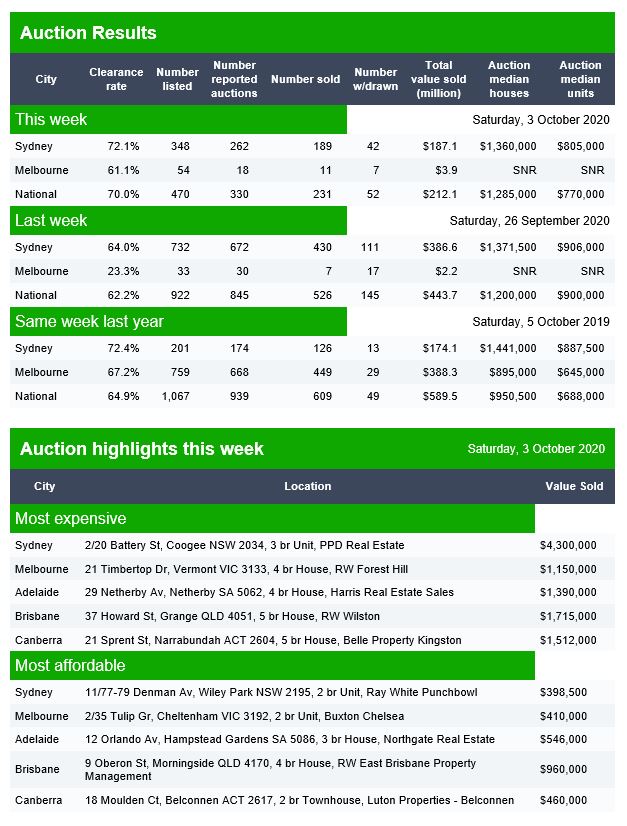My latest chat with property insider Edwin Alemida.
The RBA’s “Confusion Driven Paralysis”
We discuss a recent RBA FOI.
https://www.rba.gov.au/information/foi/disclosure-log/rbafoi-202107.html
A Spotlight On Wollongong Property
We look at the latest property data for 2500.
Auction Results 3rd October 2020
Domain released their preliminary results for today. They note that “From Thursday July 9 the Victorian government placed a ban on public real estate auctions as part of social distancing measures to slow the spread of COVID-19. The number of auctions withdrawn in the immediate weeks following the ban are likely to be higher than normal”.


Canberra listed 24 auctions, reported 19 with 16 sales, and 3 passed in to give a Domain clearance of 84%.
Brisbane listed 31 auctions, reported 22 with 8 sold, 2 withdrawn and 12 passed in to give a Domain clearance of 36%.
Adelaide listed 13 auctions, reported 9 with 1 withdrawn and 1 passed in to give a Domain clearance of 0%.

Double Trouble Housing Bubble With Joseph Noel Walker (The Jolly Swagman Podcast)
We discuss the underlying drivers of house prices, and reflect on what might be causing the bubble and what policy responses would be appropriate.
Aussie Housing The Weakest In The West! – With Tarric Brooker
My latest discussion with journalist Tarric Brooker. @Avidcommentator on Twitter.
Tony’s Financial Tips and Tidbits – With Tony Locantro
Tony opens up about his past, what influences his investment approach, and which films and books he recommends to help with market analysis.
Turning Passion Into Profit – With Allan Pease
I caught up with bestselling Australian author Allan Pease, ahead of an online seminar he is running on the 9th October – details at http://www.profitlivestream.com
Allan is an Australian body language expert and author or co-author of fifteen books. Allan Pease and his wife Barbara have written 18 bestsellers – including 10 number ones – and given seminars in 70 countries.
In our show, recorded just before the last US election debate, in passing we discussed the candidates style but focused mainly on the opportunity for self actualization.
Note: DFA has no commercial relationship with Allan or the upcoming event.
Giving Credit Where Credit Is Due – The DFA Daily 30th September 2020
The latest edition of our finance and property news digest with a distinctively Australian flavour.
The FED And The Future – With George Gammon
The latest discussion with George Gammon, Macro Addict. Entrepreneur. Investor. Real Estate Expert. https://www.georgegammon.com/
We discuss the FED and whats going on there. Will they managed to create inflation, or continue to fail?
